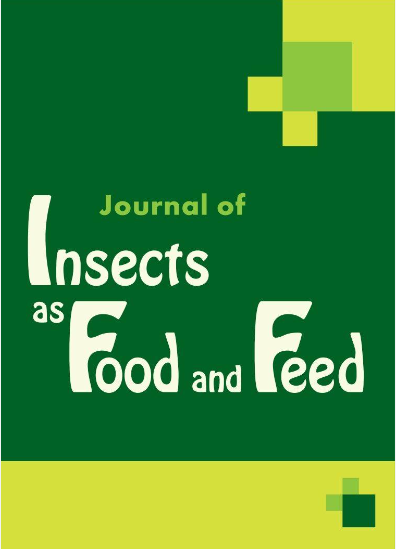Soil saprophages as an emerging global source of micronutrients
IF 3.5
3区 农林科学
Q1 ENTOMOLOGY
引用次数: 0
Abstract
‘Hidden hunger’ occurs in humans and livestock and stems from deficiencies in microelements, essential amino acids, and vitamins. Triggered by insufficient intake of micronutrients in food and feed, even when macronutrients are abundant, hidden hunger can result in the development of serious diseases and pathological conditions. Finding sufficient micronutrients is often challenging because they are either obtained from limited external natural sources or synthesised de novo. Soil-dwelling saprophages comprise one of the largest proportions of zoomasses on Earth but remain surprisingly overlooked as a potential micronutrient source. To assess their nutritional content concerning micronutrients, we selected 31 invertebrate species obtained from natural ecosystems of European Russia or widely cultivated species originating mainly from tropical regions. They belong to major soil saprophage taxa: cockroaches (Blattodea), beetle (Coleoptera) larvae and imagoes, springtails (Collembola), millipedes (Diplopoda), fly (Diptera) larvae, earthworms (Haplotaxida), woodlice (Isopoda), crickets (Orthoptera). We assessed their proteinogenic amino acid, microelement, and vitamin composition. Taxonomic differences in the composition and ratio of micronutrients were determined and we identified specific taxa naturally enriched with micronutrients for future consideration as potential candidates for incorporation into food and feed supplements to alleviate hidden hunger in livestock and humans.土壤噬菌体是全球新兴的微量营养元素来源
隐性饥饿 "发生在人类和牲畜身上,源于微量元素、必需氨基酸和维生素的缺乏。即使在宏量营养素充足的情况下,食物和饲料中的微量营养素摄入不足也会引发 "隐性饥饿",从而导致严重的疾病和病理状况。寻找足够的微量营养素往往具有挑战性,因为微量营养素要么从有限的外部天然资源中获取,要么从头合成。生活在土壤中的噬菌体是地球上比例最大的动物体之一,但作为一种潜在的微量营养素来源,它们却出人意料地被忽略了。为了评估它们的微量营养元素含量,我们从俄罗斯欧洲的自然生态系统或主要来自热带地区的广泛栽培物种中选择了31种无脊椎动物。它们属于主要的土壤噬菌类群:蟑螂(蜚蠊目)、甲虫(鞘翅目)幼虫和虫体、春蜱(鞘翅目)、千足类(倍足纲)、蝇类(双翅目)幼虫、蚯蚓(单足纲)、木虱(等足纲)、蟋蟀(直翅目)。我们评估了它们的蛋白质氨基酸、微量元素和维生素组成。我们确定了微量营养素的组成和比例在分类学上的差异,并确定了天然富含微量营养素的特定分类群,供今后考虑将其作为潜在的候选类群纳入食品和饲料补充剂,以缓解牲畜和人类的隐性饥饿。
本文章由计算机程序翻译,如有差异,请以英文原文为准。
求助全文
约1分钟内获得全文
求助全文
来源期刊

Journal of Insects as Food and Feed
Agricultural and Biological Sciences-Insect Science
CiteScore
7.00
自引率
17.60%
发文量
133
期刊介绍:
The Journal of Insects as Food and Feed covers edible insects from harvesting in the wild through to industrial scale production. It publishes contributions to understanding the ecology and biology of edible insects and the factors that determine their abundance, the importance of food insects in people’s livelihoods, the value of ethno-entomological knowledge, and the role of technology transfer to assist people to utilise traditional knowledge to improve the value of insect foods in their lives. The journal aims to cover the whole chain of insect collecting or rearing to marketing edible insect products, including the development of sustainable technology, such as automation processes at affordable costs, detection, identification and mitigating of microbial contaminants, development of protocols for quality control, processing methodologies and how they affect digestibility and nutritional composition of insects, and the potential of insects to transform low value organic wastes into high protein products. At the end of the edible insect food or feed chain, marketing issues, consumer acceptance, regulation and legislation pose new research challenges. Food safety and legislation are intimately related. Consumer attitude is strongly dependent on the perceived safety. Microbial safety, toxicity due to chemical contaminants, and allergies are important issues in safety of insects as food and feed. Innovative contributions that address the multitude of aspects relevant for the utilisation of insects in increasing food and feed quality, safety and security are welcomed.
 求助内容:
求助内容: 应助结果提醒方式:
应助结果提醒方式:


